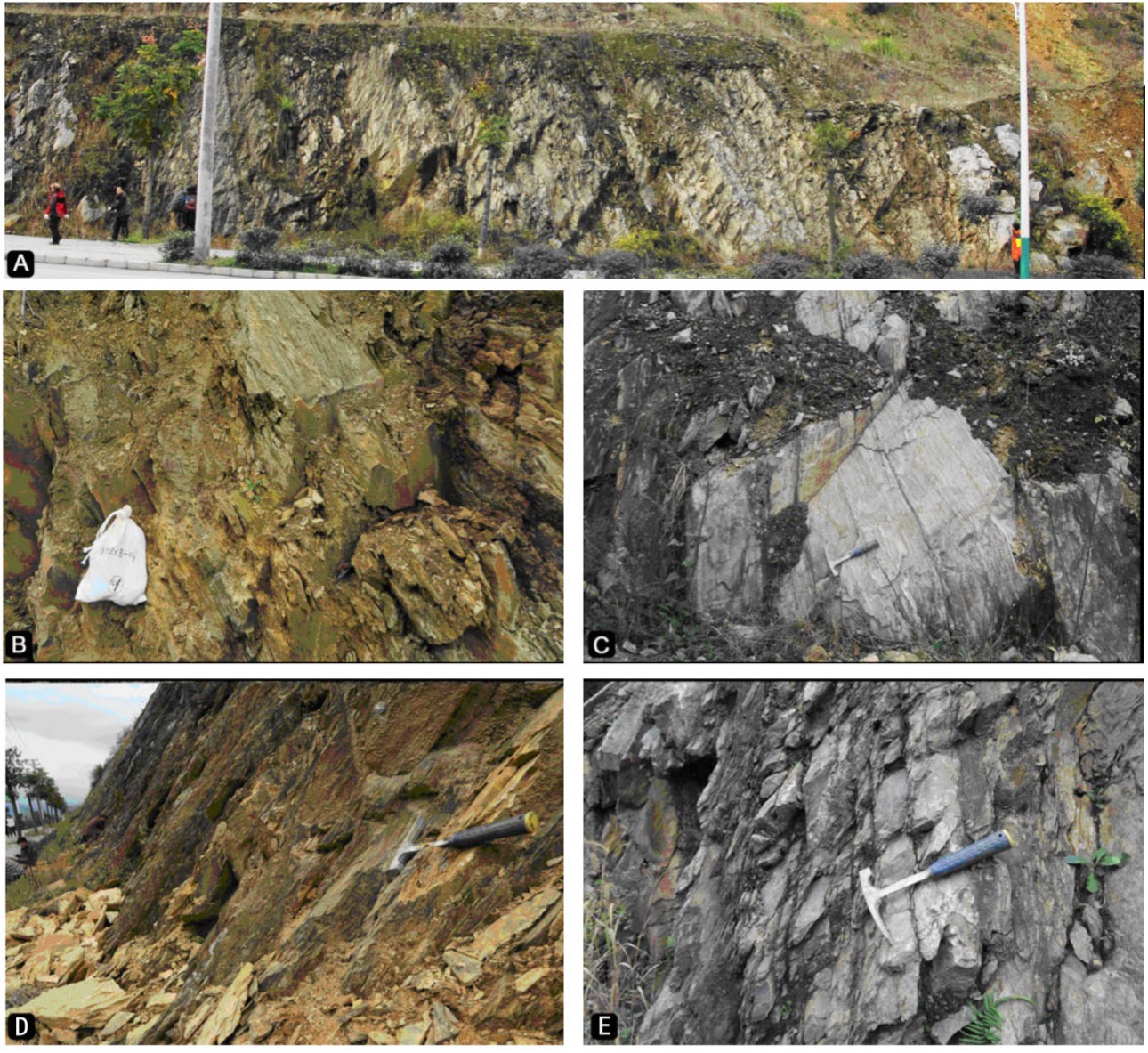Zhuxi Gr
Type Locality and Naming
It is named by the Party of Regional Geological Survey, Shaanxi Bureau of Geology in 1965 and published by the Compiling Group of Regional Stratigraphical Scale, Shaanxi Province in 1983. The type section is located at Yangjiashan, Zhuxi County, Hubei Province. Wu et al. (2018) restudied the Zhuxi Fm on the Xinsheng section at north of Zhuxi Xian (32°19′37.2″N、103°42′57.7″E).
Synonym: (竹溪群)
Lithology and Thickness
It consists of yellow green, dark gray sandy slate intercalated with sandstone and bio lithite. It is 241 m thick (Figure).
[Figure.Tthe lithology of Zhuxi Formation (from Wu et al., 2018) A. the upper part of Zhuxi Formation; B. Greenish mudstone in the lowermost of Zhuxi Formation; C. bioclastic limestone in the lower part of Zhuxi Formation; D. thin-bedded bioclastic limestone; F. Greenish mudstone, siltstone in the middle part of Zhuxi Formation; E. thin-medium-bedded bioclastic limestone in the upper part of Zhuxi Formation]
Relationships and Distribution
Lower contact
The formation rests conformably on the Meiziya Fm
Upper contact
It is overlain by the Quaternary.
Regional extent
It is mainly exposed in the border areas between Hubei and Shaanxi provinces. Obvious horizontal variation of bio-limestone partings is seen in lithology of the formation. The thickness of the formation also varies considerably, ranging from minimum thickness 186 m to the maximum one 956 m.
GeoJSON
Fossils
The formation yields corals Nanshanophyllum sp., Altaja aff. salairica, Favosites gothlandicus, Mesofavosites cf. densus var. similis, M. obliquus, Multisolenia formosa, Squameofavosites sp., etc.; trilobite Coronocephalus rex; brachiopod Eospirifer sp., Nikiforovaena sp.; Stromatoporoids Labechia sp.; graptolites Saectograptus sp., Dictyonema sp., etc.
Age
Depositional setting
Additional Information
